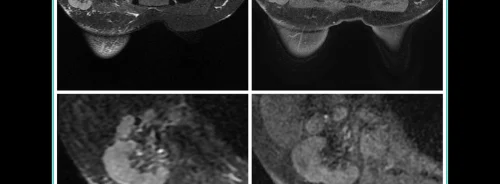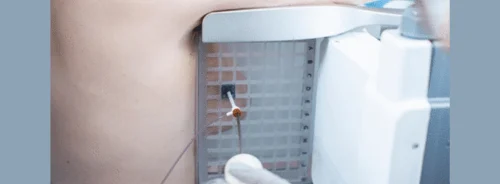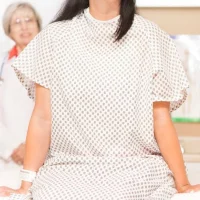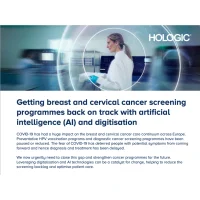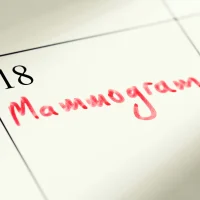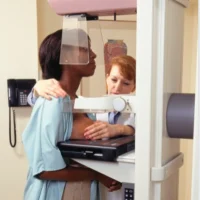Breast cancer has now overtaken lung cancer as the world’s mostly commonly-diagnosed cancer, according to statistics released by the International Agency for Research on Cancer (IARC) in December 2020.
Women often initially detect breast cancers themselves, either by self-examination (25%) or by accident (18%).
According to a 2018 survey of 19,000 women, just 2% of women know all the signs of breast cancer. Only two in five (42%) are confident about recognising the changes to their breasts that could be a sign of cancer and a 25% think that a lump is the only sign of breast cancer.
You might also like: Researchers from the University of Buckingham Medical School (UK) recently presented results from a study “A critical evaluation of Immunotherapeutic Agents for the Treatment of Triple Negative breast cancer.” Learn more
"These figures show just how much work still has to be done in raising awareness of breast cancer, particularly its signs, risks and how to act on concerns about it," said Dr Paul Goss, Director of Breast Cancer Research at Massachusetts General Hospital. "Awareness is essential, since it ensures that breast cancer is detected at an early stage. Early detection is the most effective way of saving lives, it is crucial to tackling breast cancer."
Knowing the 12 signs and symptoms of breast cancer can help patients be more confident to report a persistent and unusual breast change early. Here are the most common signs:
- Hard lump in your breast or underarm that doesn’t go away: This is often the first and most common sign of breast cancer. A lump, deep in the breast, that often feels hard, and usually immovable. It can be any shape or size. A lump is not always easy to feel.
- Thick Area: You may notice that a part of your breast feels different from the rest, being less "squishy" and more "dense." This can be a normal part of menstruation or breastfeeding, however, a thickening in your breast that doesn’t go away or gets worse could also be a sign of breast cancer. This thickening is caused when cancer cells are blocking circulation in the breast (via blood or lymph vessels) or a tumour is growing near the surface of the skin. This is different from a hard lump, which is formed when cancer cells grow very close together.
- Dimple: A dimple (or indentation) in the breast can happen when tight clothing leaves a temporary mark in the skin. But if a dimple in the breast doesn’t go away, it can also be a sign of breast cancer. This symptom is caused when a tumour (lump) deep in the breast pulls the skin inward causing it to indent. A dimple can be more easily seen when lifting your arms up above your head to see if the whole breast skin moves with you as you raise and lower your arms.
- Nipple Crust: Crust on the nipple can be a harmless skin condition, like eczema, or is a common problem with breastfeeding. But if skin remedies don't fix the problem, it could be a sign of breast cancer called “Paget’s disease.” This is when cancer cells spread inside the breast and live in the nipple, creating a scab-like red or white crusted surface that can be sore and doesn’t go away.
- Pain and tenderness: Although lumps don’t usually hurt, some may cause a prickly feeling and appear red or feel warm. It could be a sign of Inflammatory Breast Cancer, in which the flow of lymph in the breast is blocked, which causes swelling and redness, but without an obvious hard lump. This may also make the breast feel warm or hot, or cause a burning sensation. The skin of the breast may also appear pink, reddish purple, or bruised.
- Unusual nipple discharge: Discharge from the nipple is common and is harmless (benign) most of the time. However, if fluid is leaking from the breast outside of these changes, it is something that should be checked out, especially if it is clear or contains blood.
- Skin Sores: Breast cancer can sometimes build up to the point that it breaks down the skin of the breast to form an open wound. Infection may cause a bad smell and/or leakage. This is usually accompanied by an obvious hard lump.
- Bump: Sometimes a cancerous lump is on the surface of the breast. However, not all lumps and bumps are cancer. Many are cysts (fluid collections) or harmless, benign lumps made of various tissue (fibroadenomas). Many women have lumpy, bumpy breasts. However, if it’s something that concerns you, show a doctor.
- Sunken Nipple (newly inverted): Retracted nipples can be a normal shape of the breast (from when the breast was first developed). However, if you notice your nipple sinking, flattening, or turning, it could be a sign of a new breast cancer tumour forming underneath, pulling the nipple toward it as it grows.
- Growing Vein: "Enlarged veins" is one of the rarer symptoms of breast cancer. Newly appearing blood vessels or veins are usually not a sign of cancer, however, if veins become more pronounced on the breast or near the collarbone (and sometimes accompanied with a swollen arm), this could be a sign of a breast cancer tumour drawing more blood to itself and the vein swelling in size to allow for additional blood flow.
- New Shape or Size: It’s common for one breast to be different in size and shape from the other. Breastfeeding can also cause changes in size or shape as a result of milk production. But if one breast changes size, flattens, swells, or droops unexpectedly, this could be a sign of breast cancer.
- ”Orange peel” skin: When the skin of the breast looks like the dimpled skin of an orange, this is a symptom of inflammatory breast cancer known as “peau d’orange,” (from the French "orange peel"). With peau d’orange, the breast swells to the point it causes hair follicles to look like lots of little dimples. The skin may or may not change colour.
Any change or abnormality detected should warrant a doctor’s visit. Breast cancer is one of a few cancers for which an effective screening test, mammography, is available. Mammograms can detect breast cancer early, often before it can be felt and possibly before it has spread. MRI, ultrasound and clinical breast exams are also used to detect breast cancer, but not as routine screening tools.
Future Options
Ongoing studies are looking at ways to enhance current breast cancer screening options. Technological advances in imaging are creating new opportunities for improvements in both screening and early detection. One new technology is 3-D mammography, also called breast tomosynthesis. This procedure takes images from different angles around the breast and builds them into a 3-D-like image. This technology is increasingly available, however it isn’t yet known whether it is better than standard 2-D mammography for detecting cancer at an earlier, less advanced stage.
Sources: National Cancer Institute, Know Your Lemons Foundation, WHO, CDC, Avon Foundation
Photos: iStock, Know Your Lemons Foundation

